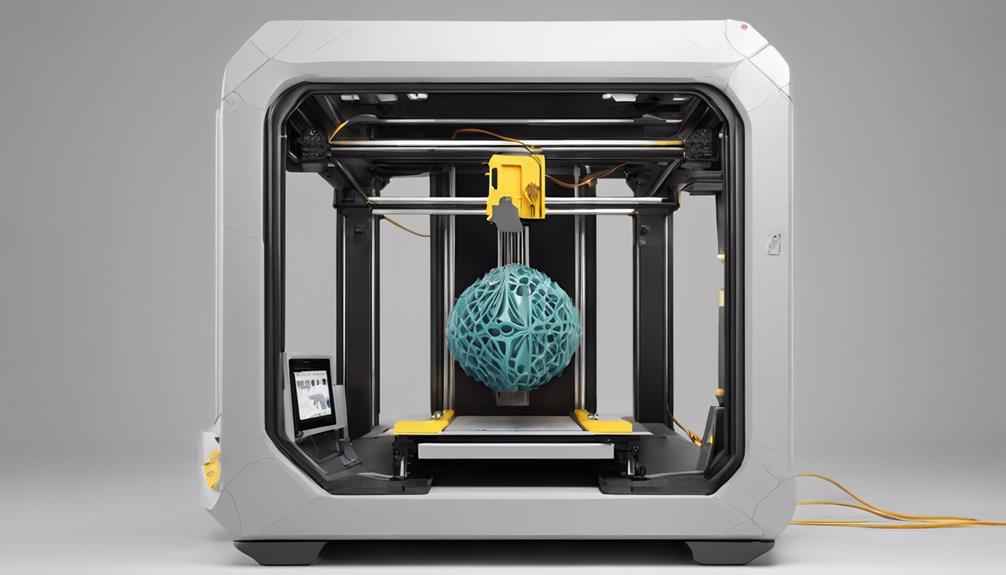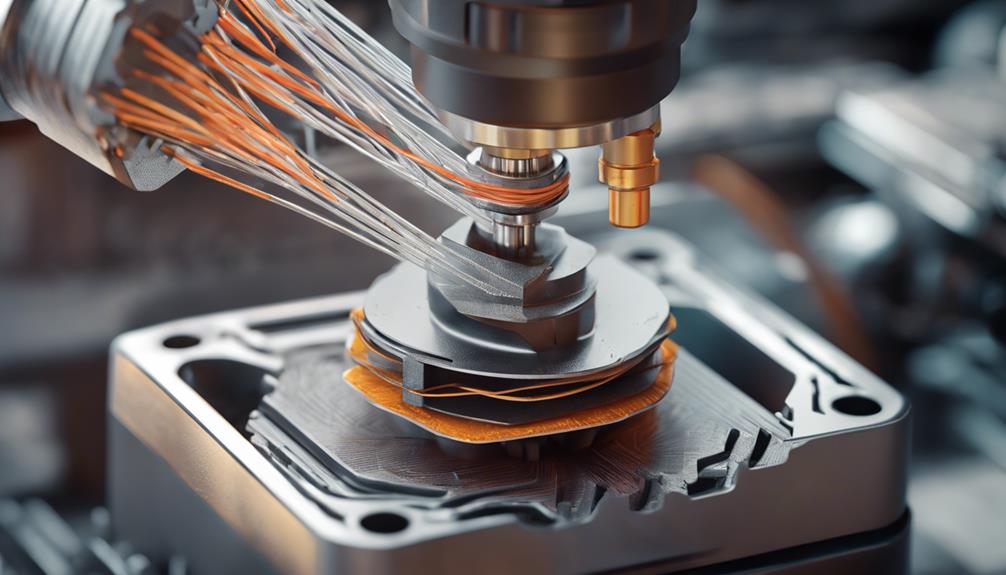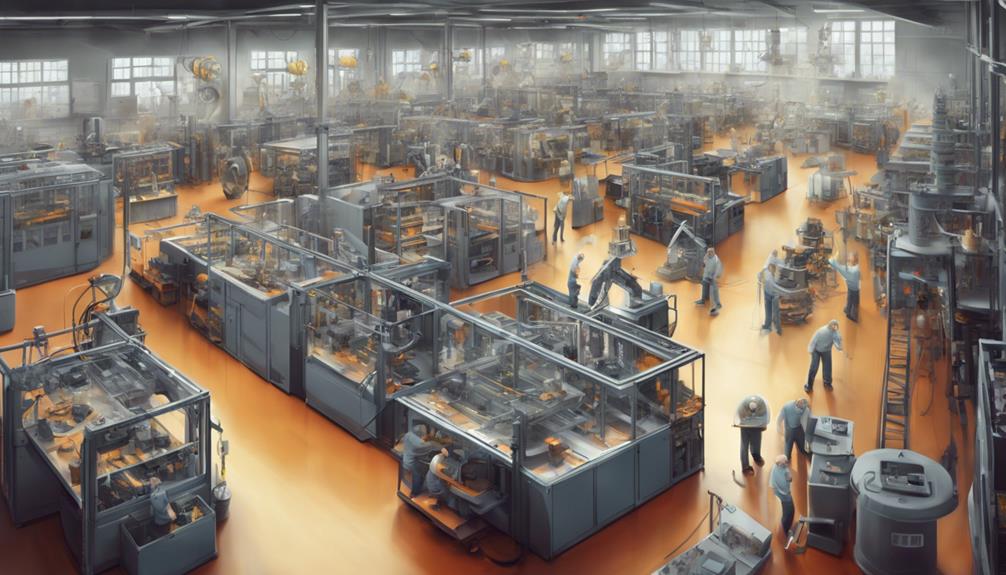When it comes to 3D printing, the curtain lifts on a domain where innovation meets practicality. Imagine holding in your hands creations that once only existed in digital form. The possibilities seem limitless, but what lies beneath the surface of this technological marvel may surprise you. As you explore the nuances of 3D printing, a world of complexities and revelations awaits, challenging preconceived notions and reshaping the way we perceive manufacturing. Curious to uncover the truths behind the layers of this transformative technology?
Common Myths About 3D Printing

If you believe that 3D printers are plug-and-play devices, you may be surprised to learn the reality behind this common myth. While they offer incredible capabilities, 3D printers require a hands-on approach and technical understanding.
Setting up a 3D printer involves calibrating various settings, ensuring proper filament usage, and troubleshooting potential issues. From adjusting print bed levels to selecting the right slicing software configurations, a successful 3D printing experience demands more than just pressing a button.
Learning the nuances of 3D printing can be rewarding, but it's essential to approach it with a willingness to engage with the technology and invest time in mastering its intricacies.
Advantages and Disadvantages of 3D Printing
Moving on from debunking common myths about 3D printing, let's now explore the advantages and disadvantages of this innovative technology.
3D printing enhances creativity by turning ideas into physical objects, offering a fun experience and saving time and money by producing specific parts inexpensively. It also provides a platform for starting a profitable business and creating intricate designs impossible with traditional methods.
However, 3D printing demands significant space, emits noise comparable to a vacuum cleaner, and requires continuous innovation to prevent underutilization. The learning curve for technology understanding and troubleshooting can be steep, potentially leading to frustration if unprepared for the time and technical challenges involved.
Key Technical Aspects of 3D Printing

Understanding different types of filaments and their properties is essential when delving into the technical aspects of 3D printing. It's vital to grasp the characteristics of filaments such as PLA, ABS, PETG, and more to achieve desired print outcomes.
Mastering slicing software and adjusting settings for best prints is another key technical aspect. Challenges like bed leveling, calibration, and troubleshooting common issues are part of the learning curve.
Additionally, understanding design software and creating or modifying 3D models play a significant role in successful printing. Regular maintenance and upgrades are necessary to guarantee the printer functions efficiently.
Embracing these technical aspects will enhance your 3D printing journey and lead to more rewarding printing experiences.
Integration With Hobbies and Interests
As you explore the possibilities of 3D printing, you'll find that it seamlessly integrates with various hobbies and interests, adding a new dimension to your creative pursuits. Whether you enjoy model making, cosplay, or DIY projects, 3D printing can complement these activities by allowing you to create custom parts and intricate designs.
For those involved in hobbies like electronics, robotics, or crafting, 3D printing offers a unique way to fabricate specific components tailored to your needs. Artists, designers, and makers can use 3D printing as a creative outlet to enhance their skills in CAD design, problem-solving, and innovation.
Embrace the endless possibilities of personalized gifts, decorations, and practical solutions that 3D printing brings to your favorite pastimes.
Realities of 3D Printing Industry

The 3D printing industry presents unique challenges and opportunities for those looking to explore its domain. Staying updated on technological advancements is vital as the industry evolves rapidly.
Understanding market trends and consumer demands can help you tailor your products or services effectively. Building a strong network within the 3D printing community can provide valuable insights and collaborations.
It's important to continuously improve your skills and stay innovative to remain competitive. Embracing sustainability practices can also set you apart in the industry.
Frequently Asked Questions
Can 3D Printing Be Used to Create Functional Objects?
Yes, 3D printing can be used to create functional objects. It enables you to produce custom parts, tools, prototypes, and even medical implants. The technology allows for precise designs and tailored solutions to meet specific needs efficiently.
How Do Different Filaments Affect Print Quality?
Different filaments impact print quality in various ways. Understanding their properties is essential. Experiment with filaments like PLA for smooth finishes or ABS for durability. Adjust settings accordingly for best results and enhanced prints.
Is 3D Printing Suitable for Educational Purposes?
Imagine 3D printing in education as a guiding light, illuminating creativity and innovation. It's an invaluable tool for hands-on learning, fostering problem-solving skills, and sparking curiosity in students. Embrace its potential!
What Are the Limitations of 3D Printing for Beginners?
When starting 3D printing, beginners face challenges like space requirements, noise levels, and the need for continuous idea generation. Learning curve for technology and troubleshooting is necessary. Frustration can arise without preparation for time and technical hurdles.
How Does 3D Printing Impact Traditional Manufacturing Industries?
3D printing revolutionizes traditional manufacturing by offering customization, rapid prototyping, and cost-effective small-batch production. It challenges the status quo, enabling industries to create complex designs efficiently. Embrace this technology to stay competitive and innovative.
Conclusion
So, you've now uncovered the truths behind 3D printing. Remember, it's not just about pressing a button and magically creating perfect creations. Embrace the challenges, hone your skills, and stay ahead of the curve in this fast-paced industry.
And hey, don't believe everything you hear about 3D printing – it's not all rainbows and unicorns, but with a little creativity and perseverance, you'll be printing your way to success in no time.
Cheers to your 3D printing adventures!